Over the last few years counterfeit coins from China have made their way to Canada and the USA via several routes including online auctions. The internet discussion boards were all a buzz on the issues and potential difficulties with these counterfeits entering the North American marketplace. Standing against the wave of counterfeit Canadian coins was Mike Marshal. Mike worked diligently on documenting the identification points and photographing known counterfeit coins. His efforts with the RCMP have essentially stemmed the tide of counterfeit Canadian coins from China making their way to Canada. We all owe Mike a debt of gratitude for his tremendous efforts.
The initial onslaught appears to be over, however Chinese counterfeit coins are here. How can we identify them so we are not deceived when we make our next purchase. They may be offered for sale with the full knowledge of the seller that they are counterfeit. It is also possible that they come to market through estate sales etc. where the seller doesn’t realize what they are. In any case, our ability as consumers to be able to detect a counterfeit coin is an important skill to develop. This article explores the counterfeit 1859 cents from China in a manner that should allow collectors to be able to detect counterfeits and avoid them.
The Chinese counterfeit outfits start with real coins as their models. This means that the characteristics of that original real coin are carried through to the dies and ultimately the counterfeit coins. For us, that gives us the markers to look for. The photos below of the counterfeit obverse and reverse and have been provided courtesy of Mike Marshal and are use here with permission.
Obverse Markers
There are 5 die cracks and a misshapen bead that will easily allow you to identify this obverse. The most distinctive features are the crack between EI of DEI, the crack at the I in REGINA and the misshapen bead at the G in REGINA that is fused to the G with a die chip. The other 3 cracks are at the C in VICTORIA and the G in GRATIA and the N in CANADA.
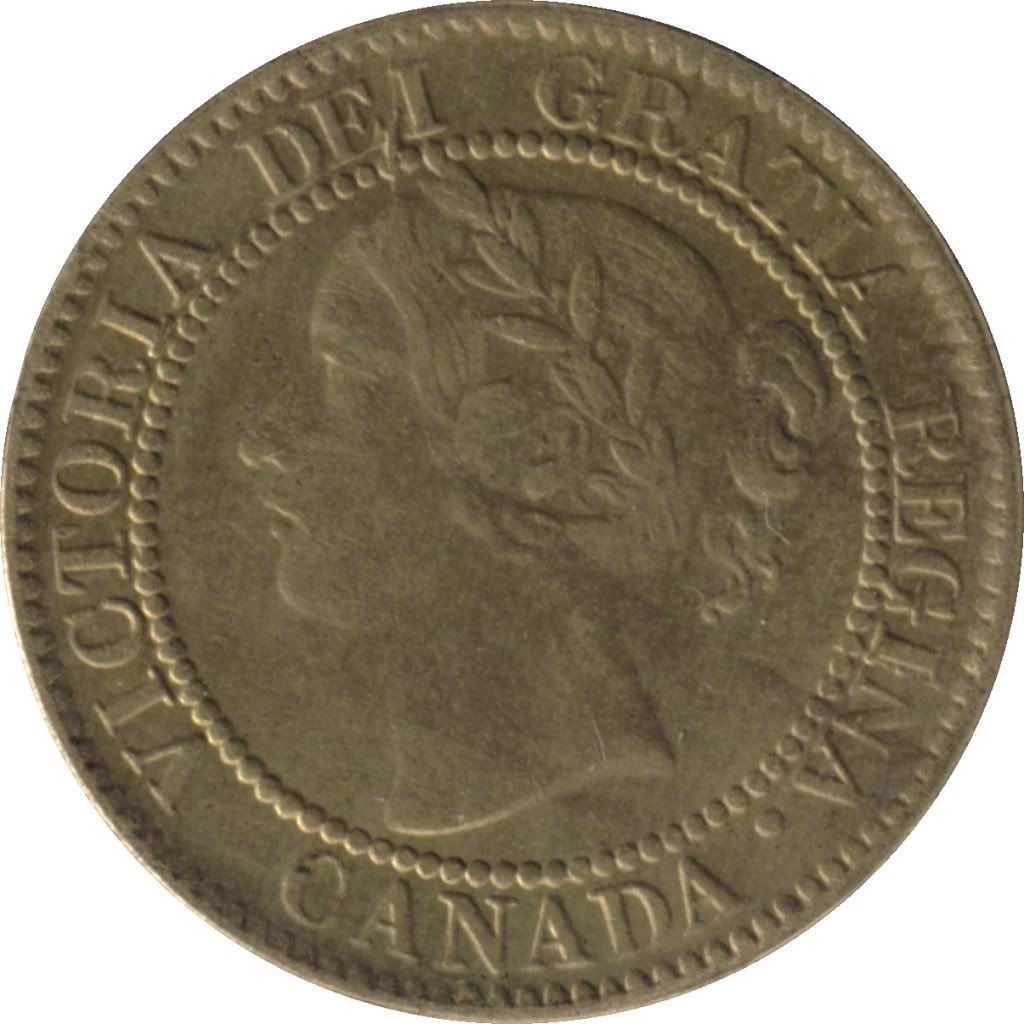 |
| Fig. 1: Counterfeit 1859 coin from Big Tree Coin Factory, obverse. Photo courtesy of Mike Marshal, used here with permission. |
There are 3 markers on the reverse side of these coins that we can use. On the counterfeit, the gap at L7 is wide, the stem at L8 is present, and the vine at L2 is closed. Both the L8 stem and the L2 vine are re-engraving efforts on the original coin. In addition, there are 2 die cracks to look for. The first is a heavy crack running from a denticle by the tip of L15 to the vine at the stem of L14. The second is a much lighter crack and runs from a denticle to the stem of L10, on through the bead line and up to the 1 in the date.
 |
| Fig. 2: Counterfeit 1859 coin from Big Tree Coin Factory, reverse. Photo courtesy of Mike Marshal, used here with permission. |
Not all coins in the market place with these characteristics are counterfeit. There are at least 6 different real reverses associated with the single real obverse used on the counterfeit coins. Only the one with the markers as indicated above are suspect. When you are looking at a coin with both the obverse and reverse markers, you are now faced with trying to determine if it is one of the real coins, or a Chinese counterfeit. Here is my short list of items to help you decide.
Chinese Counterfeit
Will never be a higher grade than seen in photo.
Will not have Vicky crud in the devices.
Will not have 160 years of patina.
Will have a colour that will make you pause.
The coin will look to be softly struck.
Vicky has had a nose job.
Will never be a higher grade than seen in photo.
Will not have Vicky crud in the devices.
Will not have 160 years of patina.
Will have a colour that will make you pause.
The coin will look to be softly struck.
Vicky has had a nose job.
Real coin
Will be seen across many grades.
Will have Vicky crud if a circ. unless the coin has been cleaned.
Will have a nice patina unless the coin has been cleaned.
Will be chocolate brown unless the coin has been cleaned.
The coin will look to be fully struck.
Vicky has her original nose.
Will be seen across many grades.
Will have Vicky crud if a circ. unless the coin has been cleaned.
Will have a nice patina unless the coin has been cleaned.
Will be chocolate brown unless the coin has been cleaned.
The coin will look to be fully struck.
Vicky has her original nose.
The big thing here is the nose. The counterfeits are softly struck and the nose just fades away into the field along the bridge and at the nostril.
No one wants to put out good money for counterfeit material so you need to be able to recognize a counterfeit when you see it. You might be thinking, what’s all the fuss about a worn 1859 narrow 9? The reason this particular 1859 is such a problem is that many 1859 variety collectors prize the full stem at L8 and will pay a premium for it. The second reason is that this counterfeit has shown up in on line auctions as “brass”. Now that’s big bucks!
Stay on your guard and learn the markers. The photos below are from an example of the real coin that was used as the model for the counterfeit. I’ve taken some close ups of the “tells” from my real coin so you can get a good idea of what to be looking for as the markers to be wary of. The nose is the key!
Thanks to Mike Marshal for graciously permitting the use of his photos of the counterfeit coin. More counterfeit coin photos from Mike can be found at the RCMP web site and the CCRS web site. It’s worth your effort to become familiar with the markers on your collecting interests.
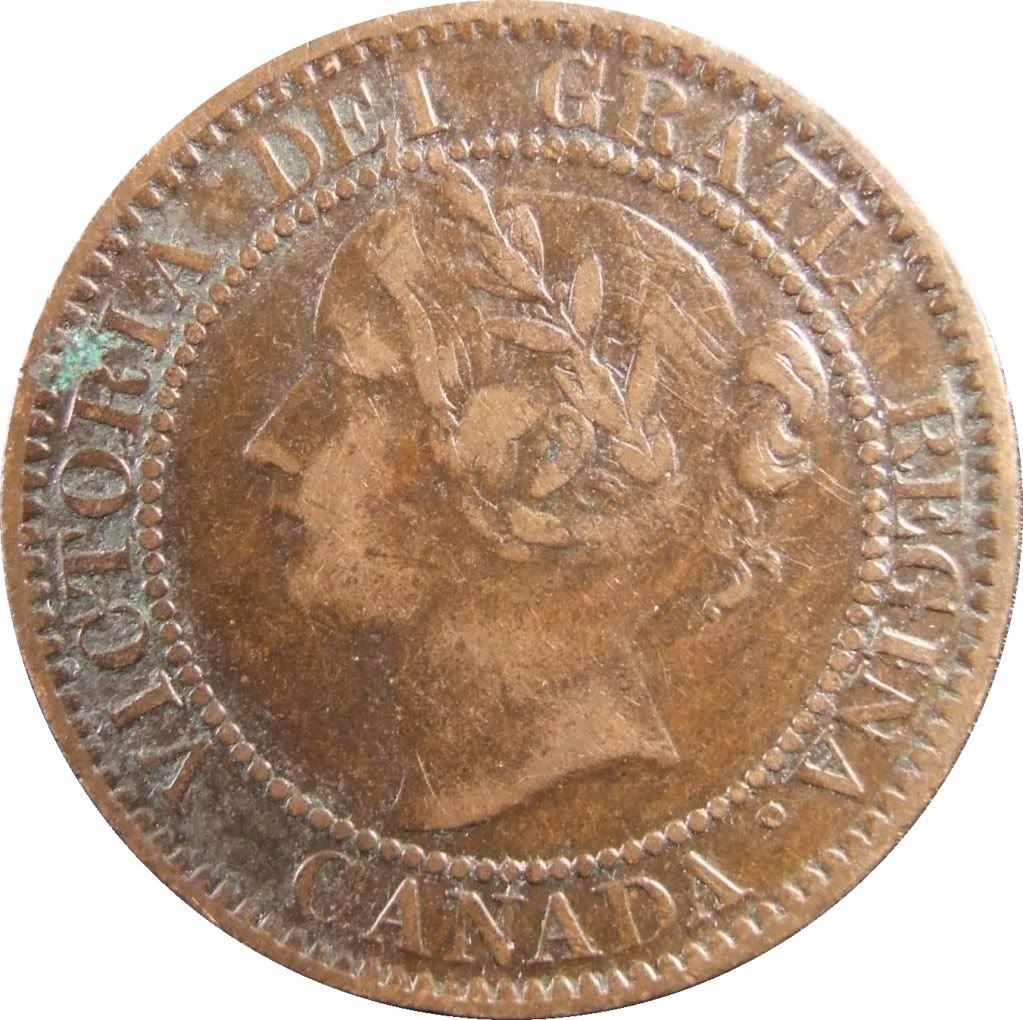 |
| Fig. 3: Real 1859 coin with same obverse of the Chinese counterfeit. |
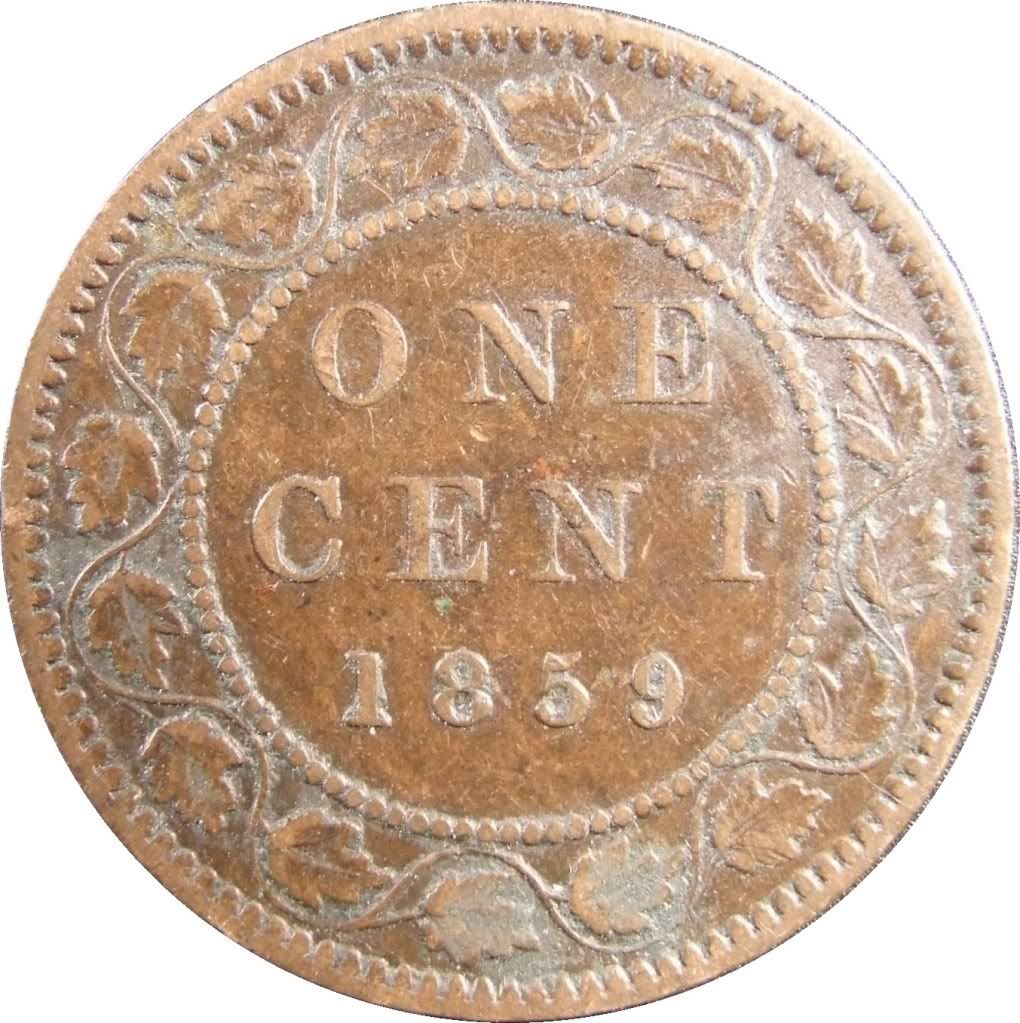 |
| Fig. 4: Real 1859 coin with same reverse of the Chinese counterfeit. |
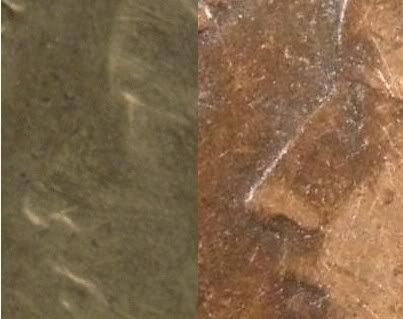 |
| Fig. 5: Counterfeit on the left, the nose fades into the field, at the bridge and the nostril. Real coin on the right for comparison. |
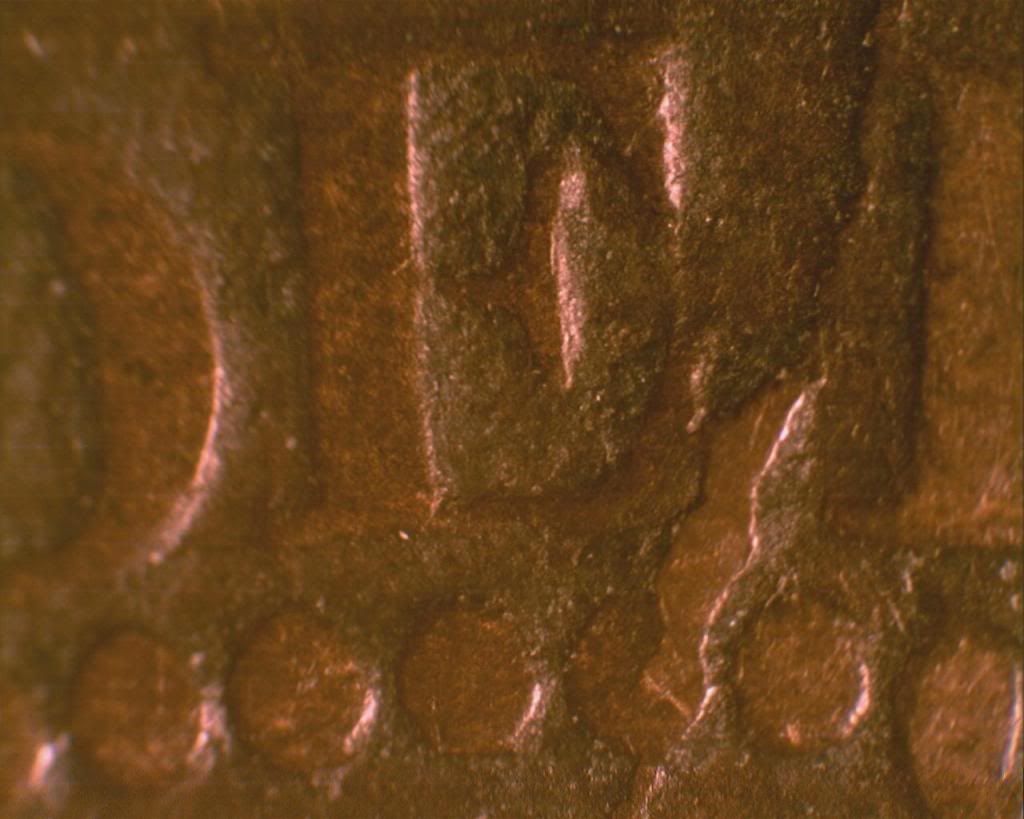 |
| Fig. 6: Die crack at DEI. |
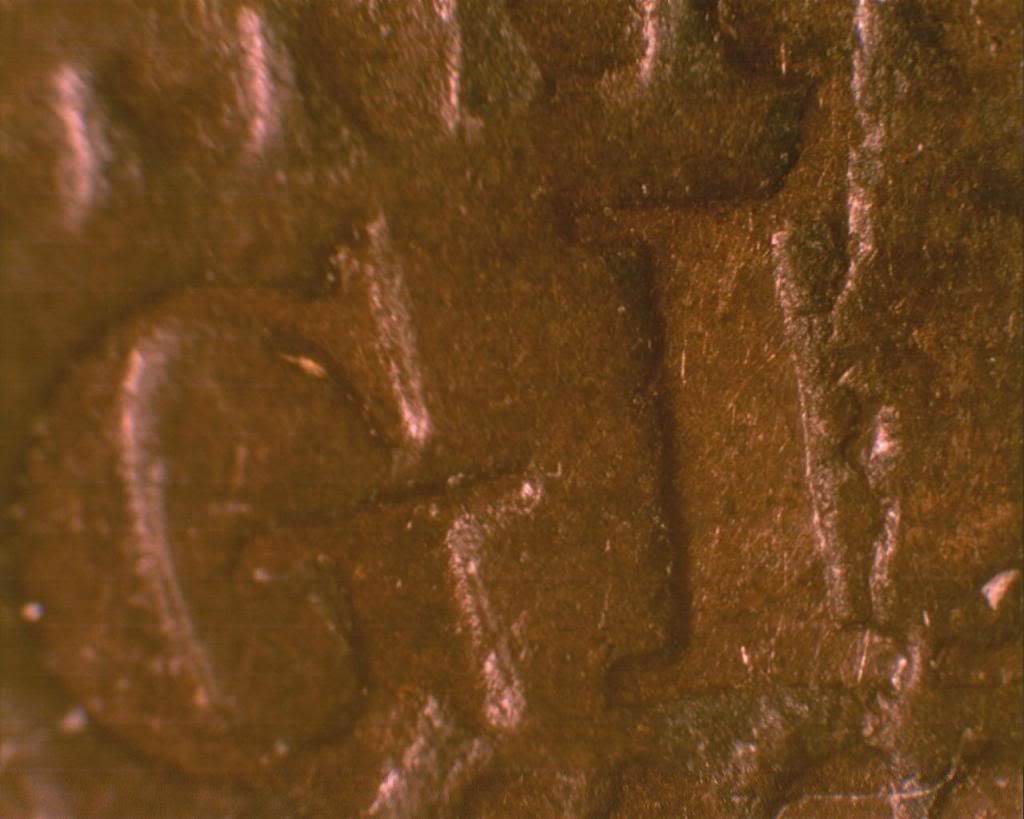 |
| Fig. 7: Die crack at I in REGINA. |
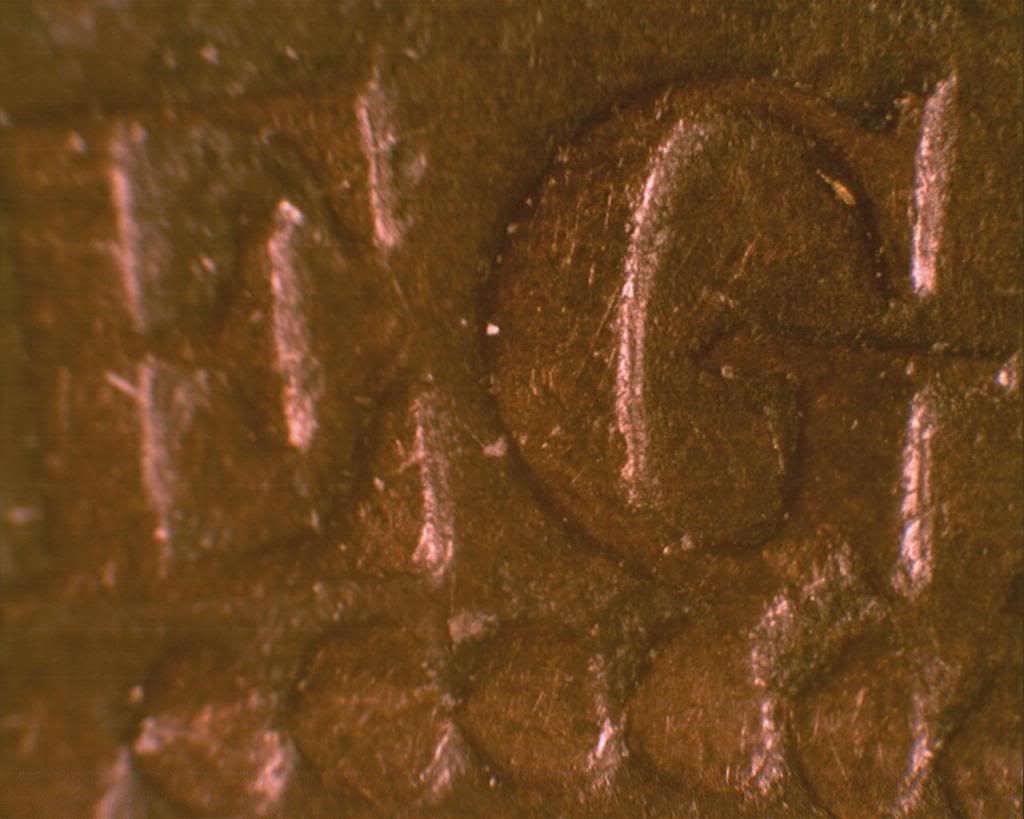 |
| Fig. 8: Misshapen bead at G in REGINA showing the die chip fusing the bead and the G. |
 |
| Fig. 9: Die crack across the tip of L15 to the vine at the stem of L 14. |
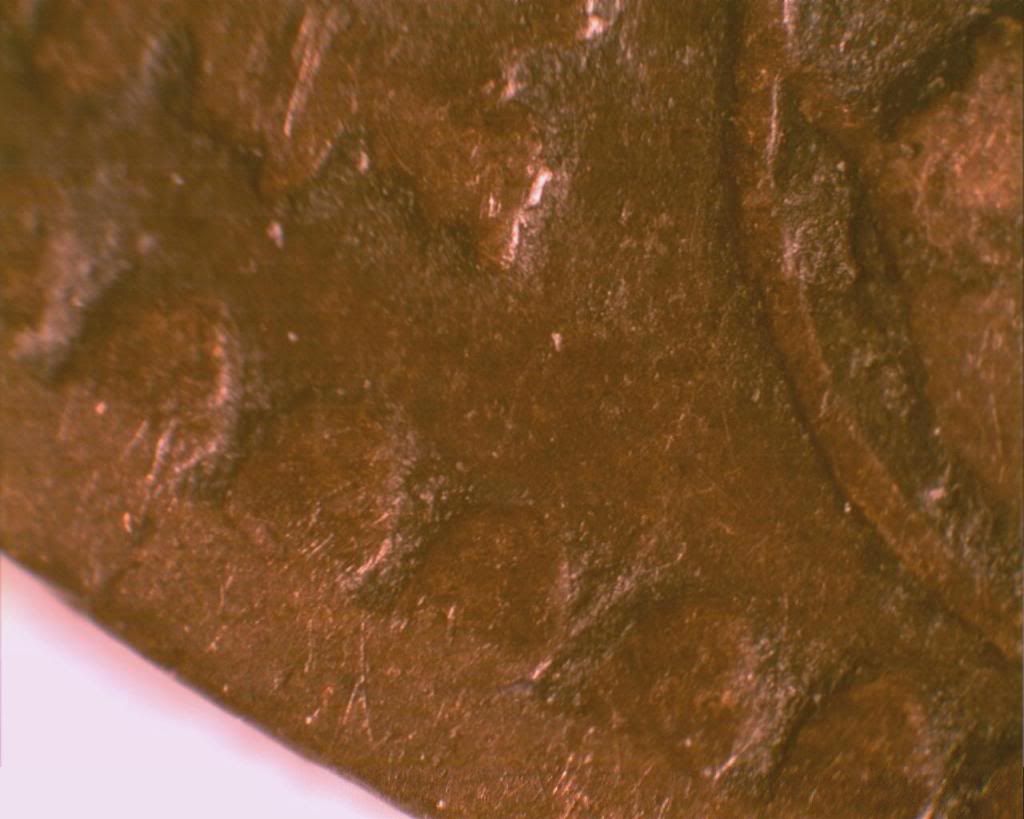 |
| Fig. 10: Die crack from the denticle to the stem at L10. |


Very interesting and helpful, as usual, Dan. Thanks to you and Mike Marshal for making this information available.
ReplyDeleteI see 1 cent coins (Canadian 1859, 1876,etc.) now on eBay which look too clean and crisp and the G looking funny. I am not knowledgeable to be sure. Hope some one like you will look at those and expose them if they were fake. I am also surprised at the number of these coins available!
ReplyDeleteUnder a microscope they look like the surface of the moon. In ALL cases the casting is near obvious. Weights are often off. I suggest buying a couple and examine them every day against real ones for 5 days. Then they are almost obvious to naked eye. US cents do not convex-concave well, and the rims are broken
ReplyDelete